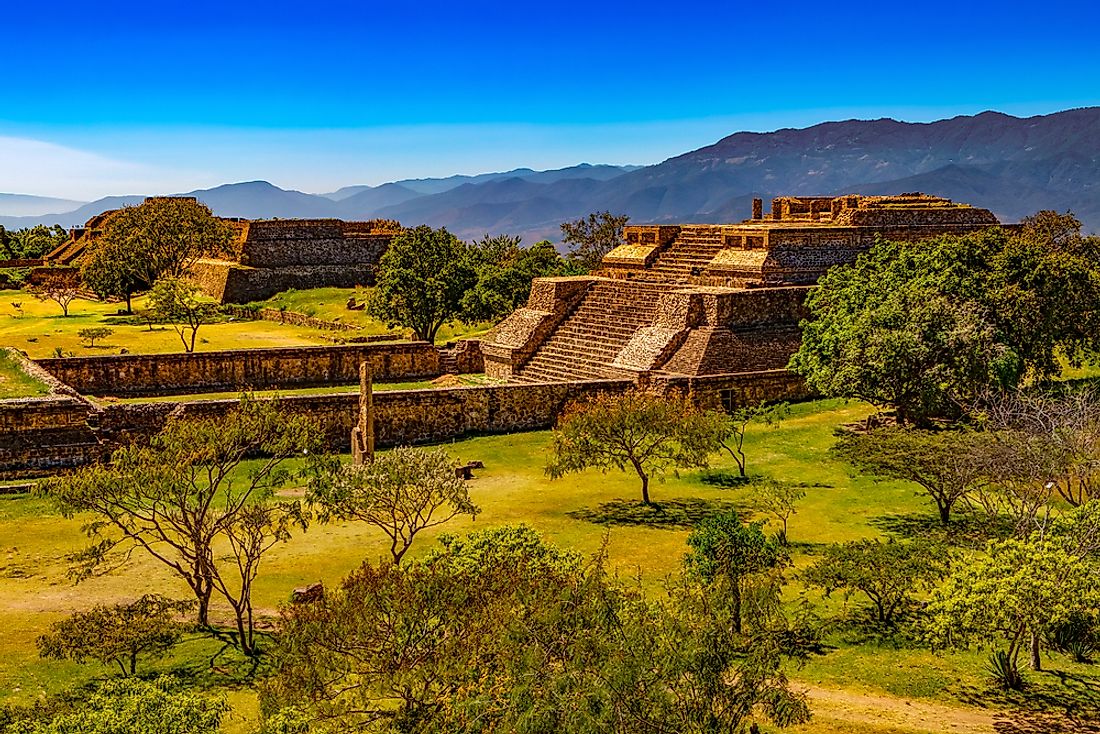UNESCO World Heritage Sites In Mexico

Mexico has 34 UNESCO World Heritage Sites that carry a rich diversity of cultural, political, and economic history of ancient civilizations as well as housing a rich biodiversity of flora and fauna. The heritage sites include four natural sites, one mixed site, and twenty-nine cultural sites. The designation of these sites as UNESCO World Heritage Sites attracts some tourists to this sites as well as conserving the sites and their uniqueness from deterioration.
UNESCO World Heritage Sites In Mexico
Agave Landscape And Ancient Industrial Facilities Of Tequila
The cultural world heritage site was inscribed in 2006. The 3,9091ha site was used for more than 2000 years to produce fermented drinks, cloth, to produce tequila since the 16th century. Distilleries and people living and working in the agave fields are an illustration of the growth and consumption of tequila locally and internationally. The site also has manifestations of the Teuchitlan tradition in the creation of terraces for agriculture, the construction of houses, temples and ceremonial mounds. The agave landscape is an illustration of the merged pre-Hispanic traditions with European distillation processes and local technologies.
Archipelago de Revillagigedo
A site is a group of four volcanic islands in the Pacific that are unique for their ecosystem and biodiversity. The site was designated a world heritage site in 2016.The islands were first discovered by Spanish explorers in the sixteenth century and later rediscovered and renamed. The islands were established as a biosphere reserve in 1994 due to their rich animal and plant life as well as the topographical uniqueness. Some animals such as the San Benedicto Rock wren which were found in the islands have become extinct. Though the islands are relatively secure from human degradation, introduction and presence of invasive species become a threat to the existing species.
Calakmul Campeche Ancient Maya city And Protected Tropical Forests
The mixed site, inscribed in 2002, is located in the central to southern part of the Yucatan peninsula. The site includes remains of the Calakmul and the Mesoamerica biodiversity hotspot (the world’s second largest). The site has one of the largest archaeological sites in the seat of the Kaan’s Mayan dynasty of the late classic period, urban settlements, roads, defense systems, water management features, and agricultural land utilization procedures. These unique features have been preserved throughout the centuries. Archaeological exploration of the area reveals the ancient way of life of the people, their burial practices, ornamentation, art, and interaction with the natural environment.
Camino Real de Tierra Adentro
The cultural site also known as the silver route represents a 2600km trade route that was in active use from the mid-16th to the 19th century. The route accounts for a well-developed and unique communication channel that opened up the northern areas and led to the establishment of multi-ethnic society and interactions that led to cultural fusion. Along the Mexican section, some sites have been inscribed as world heritage sites in 2010 including the Ojuelos de Jalisco and Zacatecas. These sites were important in the silver trade, the spread of Christianity and Spanish colonization. The sites include such elements as bridges, haciendas, historical centers, convents, temples, and a cemetery.
Other World Heritage Sites In Mexico
World heritage sites also found in Mexico include the cultural sites of Campeche historic fortified town, Chichen-Itza pre-Hispanic city, El Tajin pre-Hispanic city, and the natural sites of El Pinacate and Gran Desierto de Alter biosphere reserve and the El Vizcaino Whale Sanctuary.
UNESCO World Heritage Sites In Mexico
| UNESCO World Heritage Sites in Mexico | Year of Inscription; Type |
| Agave Landscapes and Ancient Industrial Facilities for Tequila | 2006; Cultural |
| Archipiélago de Revillagigedo | 2016; Natural |
| Calakmul, Campeche Ancient Maya City and Protected Tropical Forests | 2002; Mixed |
| Camino Real de Tierra Adentro | 2010; Cultural |
| Campeche Historic Fortified Town | 1999; Cultural |
| Chichen-Itza Pre-Hispanic City | 1988; Cultural |
| El Pinacate and Gran Desierto de Altar Biosphere Reserve | 2013; Natural |
| El Tajin Pre-Hispanic City | 1992; Cultural |
| El Vizcaino Whale Sanctuary | 1993; Natural |
| Guanajuato Historic Town and Adjacent Mines | 1988; Cultural |
| Gulf of California Islands and Protected Areas | 2005; Natural |
| Hospicio Cabañas in Guadalajara | 1997; Cultural |
| Luis Barragán House and Studio | 2004; Cultural |
| Monarch Butterfly Biosphere Reserve | 2008; Natural |
| Monte Albán Archaeological Site and Oaxaca Historic Center | 1987; Cultural |
| Morelia Historic Center | 1991; Cultural |
| Oaxaca Central Valley's Prehistoric Caves of Yagul and Mitla | 2010; Cultural |
| Padre Tembleque Hydraulic System Aqueduct | 2015; Cultural |
| Palenque Pre-Hispanic City and National Park | 1987; Cultural |
| Paquimé, Casas Grandes Archaeological Zone | 1998; Cultural |
| Popocatepetl 16th-Century Hillside Monasteries | 1994; Cultural |
| Puebla Historic Center | 1987; Cultural |
| Querétaro Historic Monuments Zone | 1996; Cultural |
| San Miguel Protective Town and the Sanctuary of Jesús Nazareno de Atotonilco | 2008; Cultural |
| Sian Ka'an | 1987; Natural |
| Sierra de San Francisco Rock Paintings | 1993; Cultural |
| Sierra Gorda of Querétaro Franciscan Missions | 2003; Cultural |
| Teotihuacan Pre-Hispanic City | 1987; Cultural |
| Tlacotalpan Historic Monuments Zone | 1998; Cultural |
| Universidad Nacional Autónoma de México (UNAM) Central University City Campus | 2007; Cultural |
| Uxmal Pre-Hispanic Town | 1996; Cultural |
| Xochicalco Archaeological Monuments Zone | 1999; Cultural |
| Xochimilco and Mexico City Historic Center | 1987; Cultural |
| Zacatecas Historic Center | 1993; Cultural |







